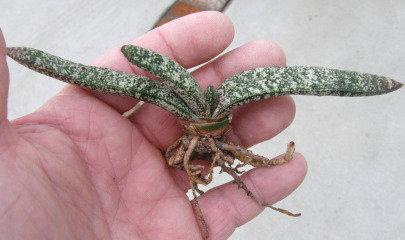Gasterias, a relative of Aloes and Haworthias, are a fascinating group of succulents that are perfect for both garden and pottery enthusiasts. While there is some debate about their classification, these South African natives are loved for their unique features and easy care requirements.
The Tongue-Shaped Succulents
Gasterias, also known as Ox Tongue, Cow Tongue, or Lawyer’s Tongue, get their common names from their tongue-shaped leaves. These plants come in a variety of sizes, ranging from a few centimeters in diameter to several feet. Their leaves can be straight or slightly arching, and their surface varies from smooth and shiny to rough and pebbly.
Unique Flowers and Identifying Features
While Gasterias share many similarities with their relatives, it’s their flowers that truly set them apart. These plants derive their name from their stomach-shaped flowers, which hang individually from thin stems. Although Gasteria species have some variations in flower shapes and sizes, it’s generally not the flowers that differentiate them from each other. This can make identification challenging, but thankfully, there are fewer species compared to other related plants.
Easy to Grow and Beautiful in Any Setting
Gasterias are known for their adaptability and can thrive in various growing conditions. They do well in lower light situations, making them suitable for indoor cultivation. However, they prefer plenty of light, as long as it’s not scorching afternoon sun. While they are not sun-loving plants, exceptions can be found in certain climates.
These succulents tend to grow best in well-draining soil with a high mineral content. The composition of the soil is less important than its ability to drain water quickly while retaining some moisture. Regular watering is necessary but should be done sparingly during hot summer months to prevent rot. These plants experience most of their growth in cooler temperatures and are more tolerant of rain during the winter.
Propagation and Pest Control
Gasterias are relatively easy to propagate, whether through seeds, leaf cuttings, or division. They have short succulent roots that make digging up and replanting a breeze. However, proper pest control is essential, especially in less-than-ideal growing conditions. Black spot, a common fungus, can affect Gasterias, forming circular black spots or depressions on their leaves. Treating them with antifungal products designed for roses can help control this issue. Mealybugs are another common pest that can be eliminated with insecticides or simply by providing more light to the plant.
A Closer Look at Some Gasteria Species
There are several distinct Gasteria species that are worth noting. Gasteria acinacifolia, for example, is a large species that forms colonies of rosettes with speckled white leaves. Gasteria batesiana is a smaller species with rough-surfaced leaves and subtle striped patterns. Gasteria baylissiana, on the other hand, is a slow-growing plant with fat, thick arching leaves that are pale and rough-textured.
Other notable species include Gasteria bicolor, Gasteria carinata, Gasteria croucheri, Gasteria ellaphieae, Gasteria glomerata, Gasteria nitida var. armstrongii, and Gasteria rawlinsonii. Each species showcases unique characteristics and can add a touch of beauty to any garden or pot.
Hybrids and Crosses
Gasterias readily hybridize with Aloes and Haworthias, resulting in some popular and commonly grown varieties. These hybrids exhibit enhanced hardiness and adaptability, tolerating full sun and overwatering better than their purebred counterparts. Some well-known hybrids include Gasteraloe ‘Green Ice’ and Gasteraloe ‘White Wings’, which combine characteristics of both Gasterias and Aloes.
Conclusion
Gasterias are captivating succulents that bring beauty and simplicity to any garden or pottery collection. With their unique features, easy care requirements, and wide range of species and hybrids to choose from, these plants are sure to delight both beginners and experienced plant enthusiasts. So why not consider adding a Gasteria to your collection and enjoy the beauty they offer?



